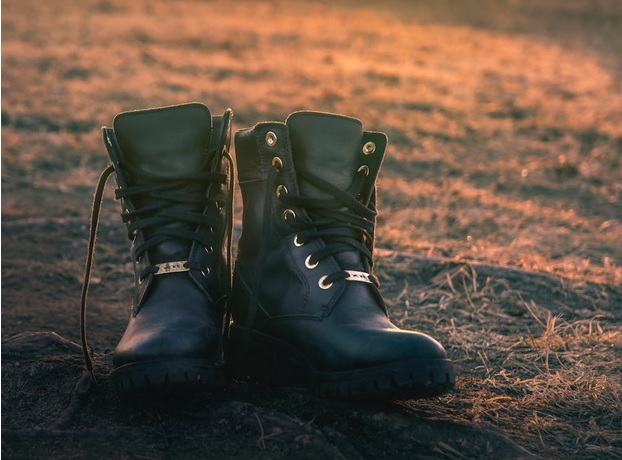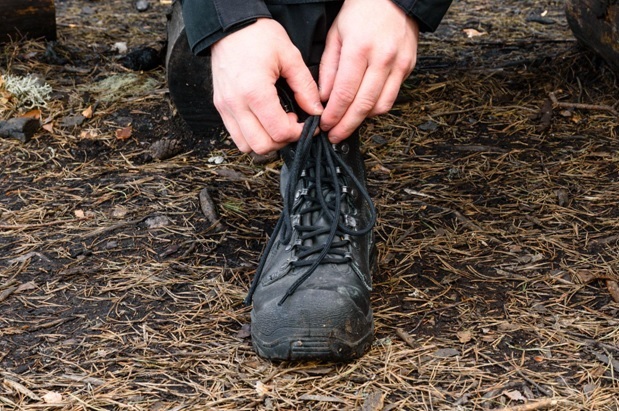Caring for Your Kids’ Combat Boots: A Short Guide
Posted by: Fatigues Army Navy Outdoor Gear on 19th Feb 2024
So your kid has a pair of combat boots. Maybe they’re new, and he or she just got them for Christmas or a birthday. Maybe they’re getting up there in seasons but they’re still the preferred pair.
Either way, boots need to be cared for, or else they, like everything else, will fall apart - and boots faster than some other things.
On that note, this is a short guide to show you the basics of kids’ combat boots maintenance - because your kids aren’t going to take care of them themselves!
What You Need to Care for Your Kids’ Combat Boots
To properly clean and maintain your kids’ combat boots, regardless of whether they are leather or a performance synthetic, you will need:
- Soft and stiff bristled brushes
- A soft rag or microfiber cloth
- Warm water
As you can see, you don’t need much to clean a pair of boots. If the boots have a waterproof membrane and are vented, you will also want waterproofing spray, and if they are leather or suede, you will want a leather conditioner.
Step One: Clean the Soles
The first thing you will want to do is scrub off the soles, and this is a good place to start because it’s probably going to take the most elbow grease, especially if the boots were worn on gravel or in mud.
Get your stiff-bristled brush and turn each boot over; look at the channels between the lugs in the soles and scrape out any dried mud, dirt, leaves, or any other debris that’s there. If a stiff-bristled brush isn’t sufficient, you can use a metal pick or an old toothbrush for this.
This is an area where mud tends to cake and small bits of gravel tend to get wedged into. Make sure you don’t leave any rocks or anything down there as they will accelerate wear on the soles.
Once the bottom of the soles are clean, use the brush to clean the sides of the soles, as well as the area around the welt, ensuring there is no caked-on mud between the sole and upper along the welt, because this will abrade the welt stitching over time.
Step Two: Clean the Uppers

With the soles cleaned, you can turn your attention to the boots’ uppers. Regardless of whether they are leather, suede, or some performance synthetic upper, you will want to make sure you don’t leave any dirt or mud on there to dry. (One note: before cleaning, remove the laces so you can properly access all parts of the upper.)
In most instances, you should be able to get most dirt and mud off with a little bit of warm water and a soft rag. Microfiber can be extremely effective in this area, but if the mud is partially caked on, break out the soft-bristled brush and scrub it away. Never use a stiff bristled or wire brush on the uppers as it can damage, even gouge them.
Pay special attention to the tongue of the boot and where the tongue folds against the inside of the upper. This is an area where dust and dirt like to hide.
If the boots are particularly dirty, you can use a little bit of a mild detergent like dish soap or saddle soap, but don’t overdo it. Less is more.
Step Three: Dry Fully
After you’ve cleaned off the uppers, remove your kids’ combat boots’ footbeds and place the boots somewhere warm to dry, especially if they are wet through.
If not only the upper but the interiors of the boots are wet, you can try stuffing the boots with crumpled up newspapers to speed up the process of drying the boots out.
You can also use a boot dryer, but whatever you do, do not ever put your boots in a washing machine/dryer, and don’t ever place them directly in front of a strong heat source, as this can damage them beyond repair.
Once the boots are dry, you can either condition or waterproof, where applicable.
Step Four: If Leather, Apply Leather Conditioner
If your kids’ combat boots have leather or suede uppers, applying a leather conditioner from time to time is critical. Leather conditioners help moisturize the leather, keeping it supple, and preventing it from cracking. Most leather conditioners will also either waterproof the leather, or make it more water-resistant.
There are a variety of commercial leather and suede conditioners you can use; always apply these in the manner prescribed by the manufacturer. On the flipside, you can also treat your leather with a combination of neatsfoot oil and beeswax. Just be aware that neatsfoot oil will darken the leather and will make it more flexible, so don’t overapply it. A little bit goes a long way.
Step Five: Waterproof If Applicable
After cleaning and conditioning, if your boots have a waterproof membrane, it’s time to reapply a waterproofing agent.
Again, there are commercial waterproofing treatments you can buy for your shoes. Like leather conditioner these should be applied in the manner recommended by the manufacturer.
Also, if you’ve never done this before, spot test because waterproofers, like leather conditioners, can change the color of boots.
Step Six (Optional): Either Wash or Wax the Laces
Since you have the laces removed, this is a good time to wash them, too. You can wash the laces in a bucket of warm water and dish soap, or, if they are not waxed, you can wash them in the washing machine like other clothing.
Also, if your laces aren’t waxed, it might be a good idea for you to wax them yourself. Waxed laces hold more tightly and also don’t hang onto dirt, dust, and won’t allow water in, keeping them cleaner for longer.
Time for a New Pair of Kids Combat Boots?

Considering the process we outlined, if you’re looking at your kids’ combat boots thinking they’ve seen better days and might be a little too far gone to resuscitate, maybe it’s time for a new pair.
We’re here for that and sell a wide range of kids’ combat boots, including jungle boots, that are great for everything from camping and hiking to just playing around outdoors. Take a look through our collection and get in touch with us at 877-612-1253 if you have any questions.

